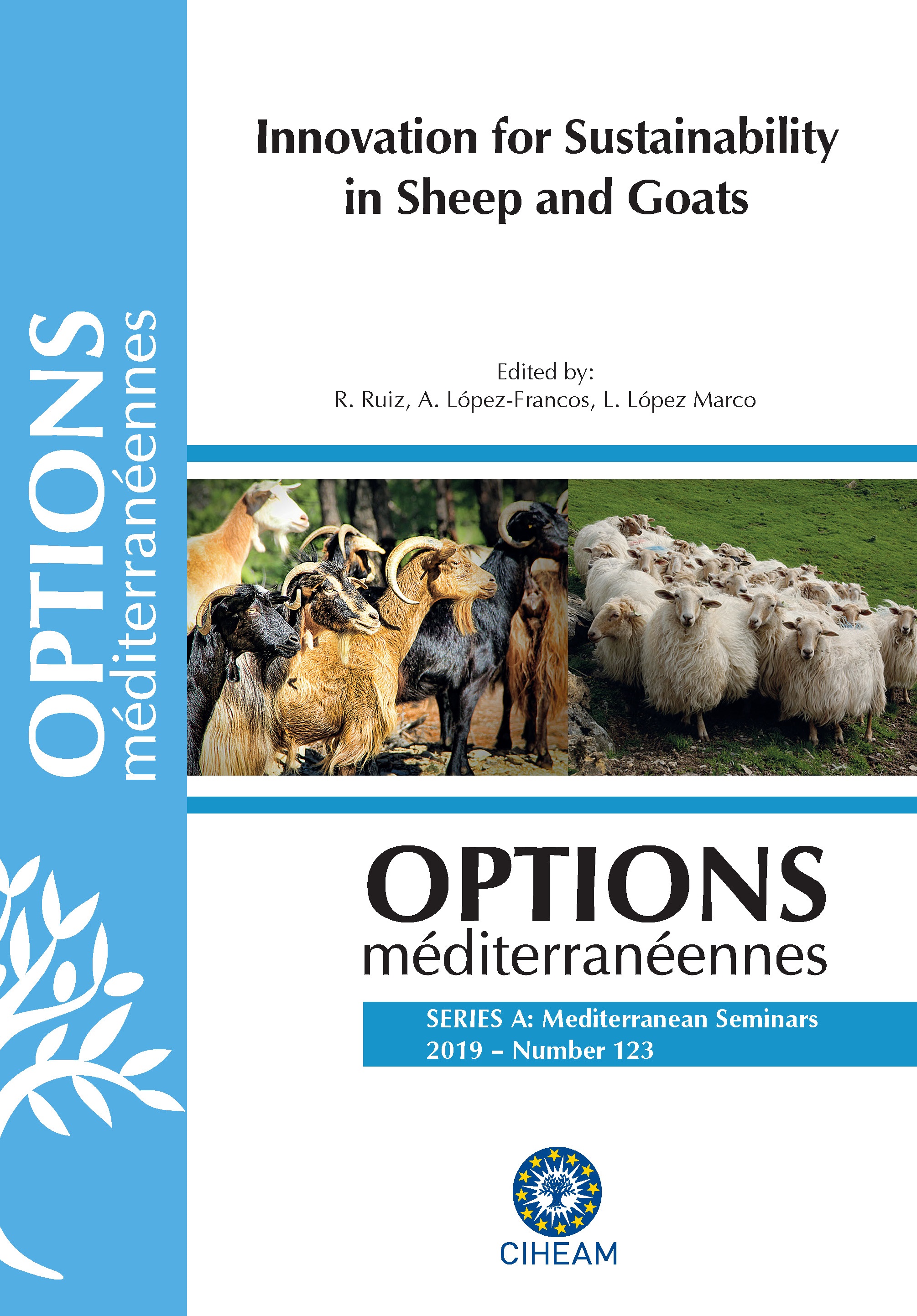| Article précédent | p. 93-97 | Article suivant |
Effet du niveau d’incorporation d’ensilage de maïs dans l’alimentation des agneaux sur les performances d’engraissement et les caractéristiques de la carcasse
L’ensilage de maïs (EM) est un aliment qui a été réservé exclusivement au départ pour l’alimentation des bovins laitiers durant les périodes où il y a une faible offre en fourrage vert mais suite à la succession des années de sécheresse, les éleveurs ovins se trouvent dans l’obligation d’introduire cette ressource fourragère en alimentation de leurs animaux. L’objectif de ce travail est d’évaluer l’introduction de l’EM à différents niveaux en alimentation des ovins d’engraissement sur les performances d’engraissement, et les caractéristiques de la carcasse. 36 agneaux D’man*Boujaâd, âgés d’environ 4 mois, ont été répartis en quatre lots homogènes qui ont été affectés aléatoirement à quatre régimes alimentaires : T0(0%EM), T1(15%EM), T2(30%EM) et T3(45%EM). Durant la période de l’engraissement (75 jours), nous avons contrôlé quotidiennement l’ingestion. Des pesées ont été effectuées au début et à la fin de l’expérimentation, et tous les 7 jours pour le premier mois et tous les15 jours pour le reste de l’essai. A la fin de l’essai, 7 agneaux de chaque lot, choisis aléatoirement, ont été sacrifiés. Le rendement carcasse, le dépôt adipeux (gras mésentérique et gras de rognon) ont été enregistrés. Le traitement a affecté significativement la croissance des animaux, les GMQ étaient de 217,9, 172,3, 160,2 et 168,2 g/j respectivement pour les régimes T0, T1, T2 et T3. L’indice de consommation et le coût alimentaire ont été significativement affectés par le traitement (P<0,05), étant de 5,72, 6,29, 7,45 et 6,17 kg MS/kg PV pour l’indice de consommation et 17,53, 18,61, 21,30 et 17,02 dhs/kg PV pour le coût alimentaire respectivement pour les régimes T0, T1, T2 et T3. Le rendement de carcasse et le dépôt adipeux n’ont pas été significativement affectés par le traitement (P>0,05).
The aim of this study was to determine the effect of increasing levels of Maize silage in fattening diets for lambs their production performance and carcass characteristics. Thirty six Moroccan crossbred lambs of “Dman*Boujaad” (21.9 ± 0.74 kg initial live weight (LW)) were divided into four homogenous groups of nine each. Diets consisted of a control containing no silage T0(EM0%), diets with T1 (EM15%), T2 (EM30%) and T3 (EM45%) maize silage (DM basis) in the ration. During the fattening trial, which lasted for 75 days, the feed intake was determined and lambs were weighed at the beginning and at the end of the trial and fortnightly. At the end of the experiment seven lambs per group were slaughtered to determine carcass dressing percentage and fat deposition (mesenteric and pelvic fat). The level of maize silage in the diet affected significantly the fattening performance, feed conversion ratio and feeding cost (P<0.05). The average daily gain of lambs was 217.9, 172.3, 160.2 and 168.2 g/d respectively, for T0, T1,T2 and T3. The feed conversion ratio (kg DMI/kg LW) was 5.72, 6.29, 7.45 and 6.17 respectively, for EM0%, EM15%, EM30% and EM45%. The feeding cost (Moroccan dirham (Mdh)/ kg LW) was 17.53, 18.61, 21.30 and 17.02 respectively, for T0, T1,T2 and T3. The carcass dressing percentage and fat deposition were not affected by the inclusion of maize silage (P> 0.05). The study showed that the 45% maize silage can be included in the fattening diets of Moroccan crossbred lambs without negatively affecting feeding cost and carcass characteristics.
- [ Afficher ]
- [ Télécharger ]
- [ Exporter la citation ]
Vous pouvez télécharger la citation au format :
- [ Imprimer ]
-
Mots-clés
CARCASSE, COUT, CROISSANCE, ENSILAGE (PRODUIT), MAIS, OVIN, TISSU ADIPEUXCiter cet article
Benbati M., El Haloui M., Hansali A., Bouazzama B., Keli A. Effet du niveau d’incorporation d’ensilage de maïs dans l’alimentation des agneaux sur les performances d’engraissement et les caractéristiques de la carcasse. In : Ruiz R. (ed.), López-Francos A. (ed.), López Marco L. (ed.). Innovation for sustainability in sheep and goats. Zaragoza : CIHEAM, 2019. p. 93-97. (Options Méditerranéennes : Série A. Séminaires Méditerranéens; n. 123). 2. Joint Seminar of the Subnetworks on Nutrition and on Production Systems of the FAO-CIHEAM Network for Research and Development in Sheep and Goats, 2017/10/03-05, Vitoria-Gasteiz (Spain). http://om.ciheam.org/om/pdf/a123/00007865.pdf



